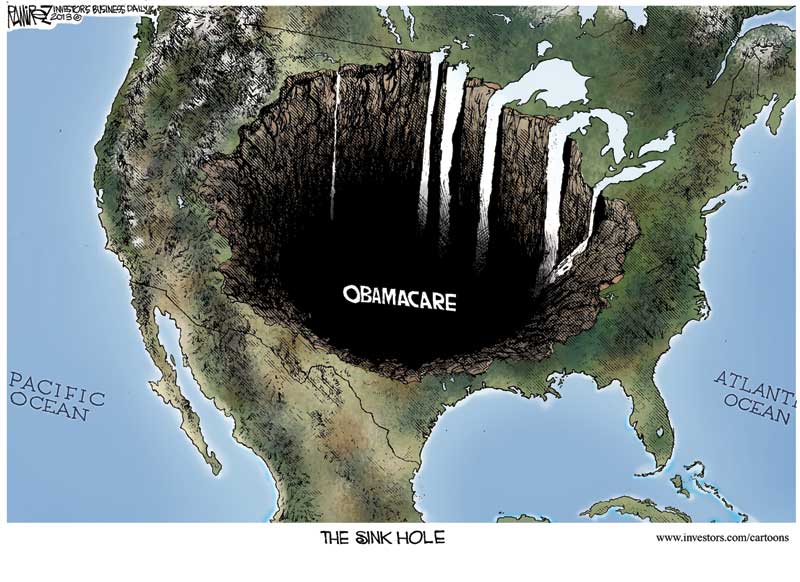
Most of the political class seems to have decided that ObamaCare is working well enough, the opposition is fading, and the subsidies and regulation are settling in as the latest wing of the entitlement state. This flight from reality can’t last forever, especially as the evidence continues to pile up that the law is harming the labor market.
On Thursday the Federal Reserve Bank of Philadelphia reported the results of a special business survey on the Affordable Care Act and its influence on employment, compensation and benefits. Liberals claim ObamaCare is of little consequence to jobs, but the Philly Fed went to the source and asked employers qualitative questions about how they are responding in practice.
The bank reports that 78.8% of businesses in the district have made no change to the number of workers they employ as the specific result of ObamaCare and 3% are hiring more. More troubling, 18.2% are cutting jobs and employees. Some 18% shifted the composition of their workforce to a higher proportion of part-time labor. And 88.2% of the roughly half of businesses that modified their health plans as a result of ObamaCare passed along the costs through increasing the employee contribution to premiums, an effective cut in wages.
Those results are consistent with a New York Fed survey, also out this week, that asked “How, if at all, are you changing (or have you changed) any of the following because of the effects that the ACA is having on your business?” For “number of workers you employ,” 21% of Empire State manufacturers and 16.9% of service firms answered “reducing.”
To complete the triptych, an Atlanta Fed poll earlier this month found that 34% of businesses planned to hire more part-time workers than in the past, mostly because of a rise in the relative costs of their full-time colleagues. ObamaCare may be contributing to that surge to the extent the law’s insurance mandates and taxes increase spending on fringe benefits for people who work more than 30 hours.
Liberals will dismiss this as merely anecdotal or of minor impact, but it makes sense that ObamaCare’s labor effects would be concentrated in some industries with relatively low-wage or marginal workers. The data points also help explain why the number of people employed part-time surged by 12% during the recession but the rate hasn’t fallen even as the economy has improved. Or why labor force participation is the lowest since the late 1970s.
Chief White House economist Jason Furman put out a report in July that attempted to explain this collapse in the share of Americans working. He attributed about half the decline to an aging population and a sixth to the conventional expected result of the downturn. But he simply threw up his hands and assigned a third of the responsibility to an “unexplained” category.
Our view is that Mr. Furman’s gnomes were wrong to gloss over government-fueled labor distortions like ObamaCare. People are responding at least in part to the incentives to work fewer hours or not at all, as the research of University of Chicago economist Casey Mulligan on marginal tax rates has shown. But there are also simply fewer jobs available that would have been created in the past, as the Fed surveys show.
Slow growth is the great tragedy of the Obama Presidency, and maybe these findings will eventually get past the liberal Iron Dome of only positive thoughts.
